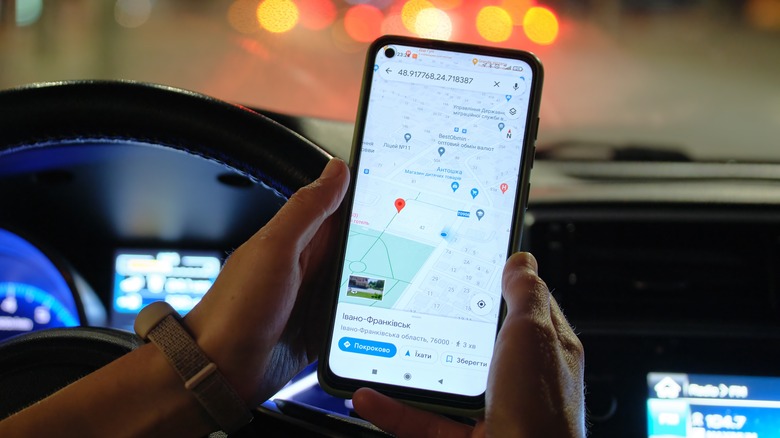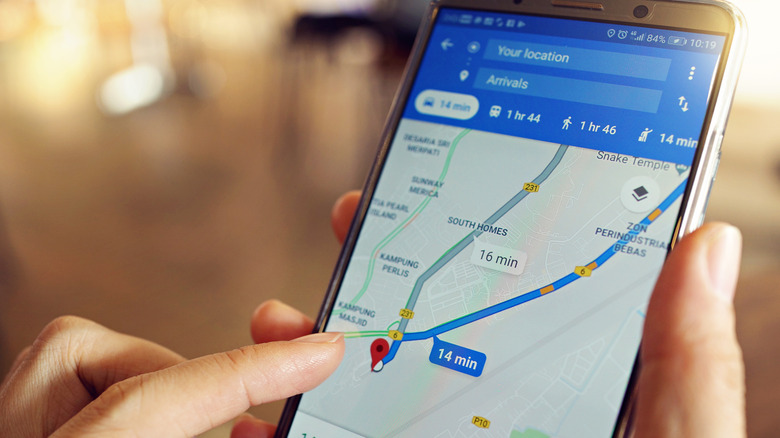How Google Maps Changed The Navigation Game
Whereas printed MapQuest directions and TomTom devices once reigned supreme, Google Maps is now the top choice for many when it comes to GPS navigation. The product was released in February 2005 as a desktop platform that enabled users to find nearby businesses and get directions from one location to another (via Google). It was only a couple of years later that Google introduced real-time traffic information for major cities across the U.S., and Street View soon followed with a full debut in May 2007.
Digital maps were not a new phenomenon while Google Maps was under development, mind. Yahoo Maps had already been created and released in 1998 and was enjoying regular updates, not to mention some unique features at the time (via TechCrunch). The aforementioned MapQuest service was created in 1996, meanwhile, providing users with digital maps and, soon enough, printable directions. MapQuest arguably made digital mapping popular, but Google Maps finally caught up with its then-biggest competitor in 2008, as noted by Business Insider at the time. What changed that made Google's navigation product so popular with drivers?
How Google Maps became what it is today
Not only did Google quickly expand its Maps features over the few years following its launch, but it also made the service more convenient than ever with the arrival of its Android smartphone app in 2008. That product joined a previous version of Google Maps that supported now-obsolete mobile devices from companies like Palm and Blackberry, ultimately marking the arrival of the smartphone navigation era we enjoy today. The Google Maps app for iPhones didn't arrive until years later in 2012, however.
Speaking to The Guardian, former Google geospatial division vice president John Hanke said that satellite imagery — and Street View in particular — likely also paved the way for Google Maps' dominance in the market. Following its limited launch in 2006, the Street View feature rolled out internationally in multiple countries in 2008. Not only did the now-iconic Street View vehicles capture images of roads, but they also used GPS to map out routes, giving Google access to a huge amount of navigation data while also offering consumers an entirely unique look at maps — with a view from the streets, literally.
Though Google has since faced competition from companies like Apple and Microsoft, Google Maps remains at the top of the market — in fact, it was the most popular navigation app in the U.S. in 2021, followed closely by the Google-owned navigation app Waze (via Statista). The product has earned its spot as the top navigation app owing to its accuracy, ease of use, and all of the features it provides. The service completely changed how people navigated in their day-to-day lives, and it remains the most influential and widely known because of it.

